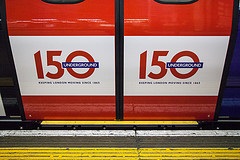Operators “sterilised” the mobile payments market for five years, despite demand for the technology from the mass market, a Transport for London executive has claimed.
In an outspoken attack on operators, Shashi Verna, Director of Customer Experience at TfL, the public sector organisation responsible for running most of London’s transport system, suggested mobile payments could be at the same level of popularity as contactless cards had they not tried to control the market.
According to TfL, 1.2 million transactions are made on its network each day by using contactless payment (ie, bank or credit) cards. Verna said it is seeing 19,000 new such cards being used on its network daily.
They were introduced onto the network last September and can be used instead of TfL’s Oyster card tickets, which are also contactless and were launched in 2003 in a bid to speed up entry through ticket gates.
Verna said TfL started exploring the introduction of contactless payment cards along with handsets in 2007. He said: “NFC phones have been a lot harder to do. They haven’t delivered that innovation as fast as others have done.”
TfL originally held a trial with O2 in London in 2007, giving consumers the Nokia 6131 to make contactless payments via NFC. Verna said he was staggered by the response to the trial, with 92 percent of participants saying they would use the technology to pay.
But he went on to say: “Back then the technology was embedded into handsets and then the network operators got together, changed the standards and could never make it work. I don’t know of a single successful implementation of that technology. It’s too slow and too cumbersome.
“The industry then died for five years because the operators did nothing with it. I hope I don’t sound rude in saying this but they sterilised the industry for five years.”
[Read more: Vodafone Wallet gets bankcard support to boost contactless payments]
Operators have long since argued that embedded SIM-based NFC payment schemes provide users with a higher level of security than other payment methods. TfL announced in September it would take payments from consumers using the likes of EE’s Cash on Tap.
However, according to Verna, the landscape has only changed now because of the involvement of handset vendors and operating system providers, with the expected global rollout of Apple Pay and Android Pay. He claimed TfL has logged journeys from American iPhone users of Apple Pay who have used their phones in London. He said: “Finally the industry is showing signs of life.”
Verna made the comments during a presentation by Mastercard, which also illustrated how slow the mobile payments market was taking off. As Johan Lindstrom, Head of Digital Commerce at MasterCard Europe, remarked: “It’s finally about to happen, even though I have been sitting here saying that for the past six or seven years. Apple and Android have started to scale this in a way that wasn’t possible.”
Mastercard’s rival Visa was also singing from the same hymnbook, arguing maybe, just maybe, the tipping point for mobile payments could finally be here. New research said six in 10 UK consumers will use their mobile to make payments at least once a week by 2020.
However, a closer reading of the report revealed this covers all sorts of payments from a mobile device. While the research said payments from mobiles will be worth £1.2 billion per week in 2020, there was no split out of how much of this would be coming from contactless smartphone use.
The survey would only say 47 percent of consumers “were interested” in using their smartphone to make contactless payments.
Jeremy Nicholds, Executive Director for Mobile, Visa Europe said: “While we’re excited to see consumers saying they expect to triple their weekly spend using mobile payments over the next five years, we at Visa think those numbers could be rather conservative and that the actual adoption rate will be much higher. This is particularly true when you look at the growth in contactless usage, which saw European usage grow by 2x and spend grow by 3x over the last 12 months.
“Contactless and online commerce enhancements have been key in paving the way for the next generation of mobile payment technology. The environmental conditions are already in place to meet the demands and expectations for digital payments. It’s no longer a question of ‘if’ consumers will embrace this new way to pay – it’s when – and for us the next 12 months are when mobile payments become mainstream.”
The success of contactless payments is not up for debate. According to figures from Mastercard, 10 contactless payments are made per second. However, it seems payments via mobile devices are quite a way behind and some are pointing their fingers at operators for holding it back.



